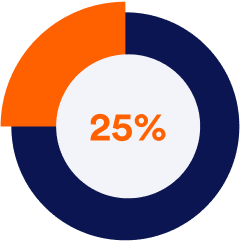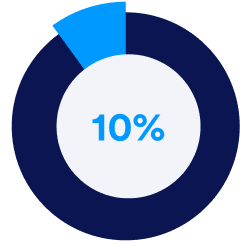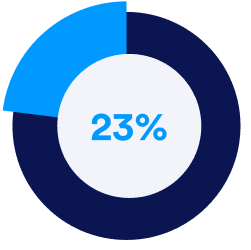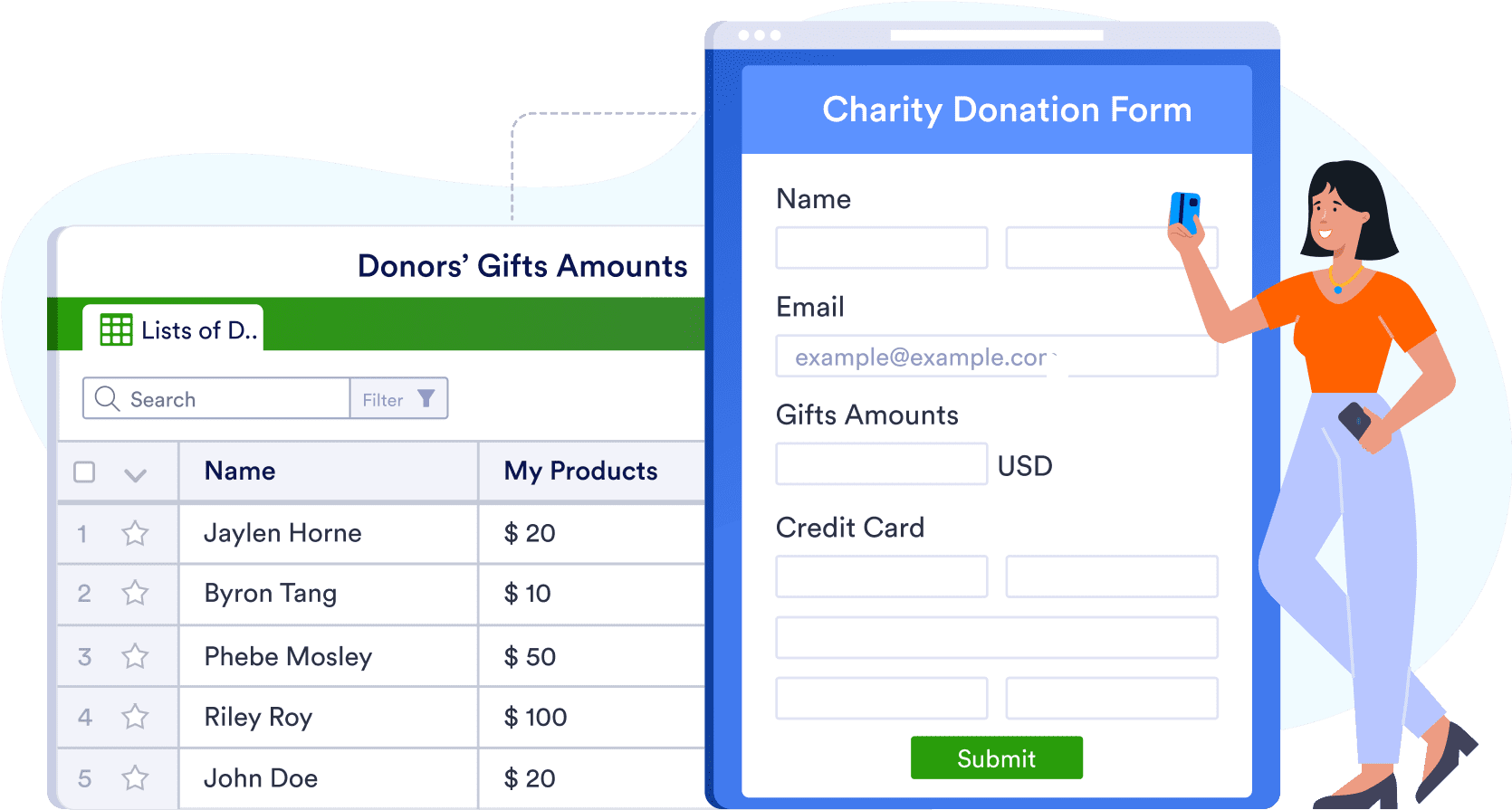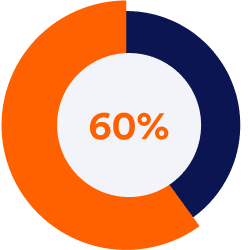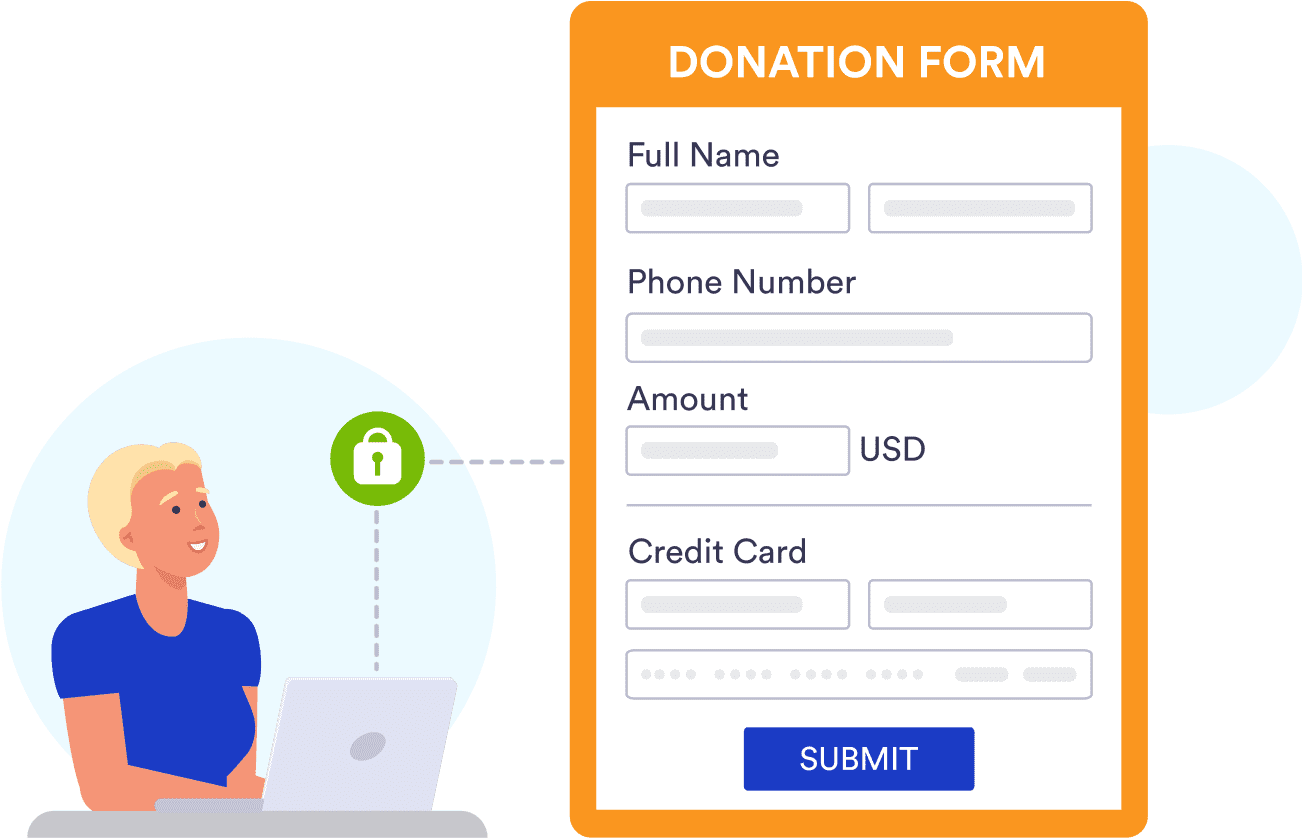WHITE PAPER
Technology for nonprofits: Building trust and increasing impact
Technology for nonprofits: building trust and increasing impact
Nonprofits employ 12.3 million people and spend almost $2 trillion a year in the U.S. — from billions in payroll costs to everyday expenses like food and rent. But inflation, interest rate hikes, and market uncertainty have pushed organizations to make the most of limited resources. With prices on the rise, nonprofits are fighting to meet the needs of those they serve while losing volunteers to high gas prices and scrambling to recruit and retain staff.
Without enough staff to meet their needs, some nonprofits are struggling to deliver on their promises. If nonprofits can’t put donations to good use — or prove they’re using their resources effectively — they’ll lose the trust that keeps them operational.
“The public wants to see nonprofits consistently deliver on their promises. This is the most important trust variable across current and likely nonprofit donors as well as across generations.”
That’s why nonprofits need to leverage the right technology to fill the gaps and help reach their potential. From donation management platforms to online payment processing tools, nonprofits can use no-code online software to prioritize innovation and community-building.
Over the next few chapters, we’ll discuss why digital transformation for nonprofits is essential to control costs, deepen engagement, and prove impact, plus how to create a successful digitization strategy.
How technology solutions for nonprofits improve transparency and donor engagement
Donors provide much of the funding that determines your nonprofits’ longevity and reach. As a result, you need to maintain donor relationships through communication and trust.
While nearly 60 percent of American adults trust nonprofits, don’t take their confidence for granted. These organizations must continuously earn trust and deepen engagement by improving transparency. The more donors perceive nonprofits as behaving ethically, the more likely they are to trust and continue to give to an organization. Nonprofits can use technology to help maintain the transparency that cultivates trust — among both donors and the general public.
Nearly 60 percent of American adults trust nonprofits.
Donor Surveys
Online surveys are one of the easiest ways to foster greater engagement with existing and prospective donors. From feedback requests to event evaluations, surveys help you learn more about your donors and identify potential new ones. You can then tailor relevant appeals that speak to their concerns. Most importantly, you can remind your donors that their opinions matter enough to directly affect how you run your nonprofit.
Online Forms
Digitizing forms instantly streamlines volunteer recruitment and donation processing. With the right programs to create and share online forms, nonprofits can save time, money, and storage space. Online forms enable electronic donations as well (through online payment processing systems), which makes giving more convenient. An online form builder that creates mobile-friendly forms is critical to serving donors, as more than 300 million people in the U.S. have a smartphone.
自動化およびカスタマイズされた寄付者への謝辞
寄付者一人一人に心のこもった個別のお礼のメールや手紙を送るのは理想的ですが、組織が大きくなるにつれて現実的ではなくなります。次善の策として、テクノロジーを使って寄付者への謝辞をカスタマイズする方法があります。
様々な非営利団体向けテクノロジー・ソリューションは、寄付者への謝辞の手紙やメールに寄付フォームの情報をあらかじめ入力したり、配達地域に応じて郵便料金を割り引いたりすることで、コミュニケーションを効率化します。一部のプログラムでは、寄付者を引き込み、その支援に感謝する真に個人的な方法である、謝辞動画を作成することができます。
ダイナミックなEニュースレター
非営利団体に人気のコミュニケーション手段であるEニュースレターは、寄付者にとってかけがえのないものです。あなたの活動への情熱を促し、読者との関係を強化し、安定した寄付の可能性を高める素晴らしい方法です。
"寄付者との豊かな双方向の会話を促進し、寄付者の期待の変化に合わせて進化するためのツールを提供するテクノロジーに投資します。"
Eニュースレタープログラムは、非営利団体がコンテンツを作成し、スケジュールを立て、複数のEメールリストを管理することで、現在および将来の寄付者をより的確にターゲットにすることができます。完成したプロジェクトやキャンペーンの統計、最近の寄付活動の受益者についてのストーリーを共有するために、ユーザーは簡単にパワフルで大胆な画像やビデオを含めることができます。オンラインテンプレートを使えば、デザインの経験がなくても、目を引く吹き出しボックスを作成し、箇条書きのリストで強調する代わりに、最新の統計情報を目立たせることができます。
カスタム寄付者ポータル、アプリ、エクスペリエンス
多くの非営利団体向けテクノロジー・ソリューションは、寄付者向けアプリやポータルを作成するためのツールを提供しています。これらの寄付者管理システムは、寄付者が貴重な情報やディスカッションボードなどにアクセスできるようにします。
このようなアプリやポータルサイトを通じて、長期的な実績、組織の財務状況の概要、進行中のプロジェクトや開催予定のイベントのリストなどを共有し、寄付者とつながることができます。寄付者を階層別にグループ分けしている場合は、オンラインポータルを通じて特定のグループに限定した情報を提供することができ、大口寄付がどのように人々の役に立ったか、特定のプロジェクトに貢献したかを詳しく説明することで、寄付者との関係を深めることができます。
Customized donor portals can also include information about upcoming events and volunteer opportunities, downloadable fiscal statements, progress on organizational goals, and news on recent achievements. Consider creating portals for volunteers to track the hours they’ve given to your cause or measure the monetary value of their work.
Safe donor data collection
Digital data collection allows nonprofits to update donor databases and personalize donor interactions. Beyond basic information like names and addresses, you should also gather data on donors’ giving habits and other interactions with your organization. The more you know about donors, the better your relationship with them will be.
Your technology should help measure and analyze data across all departments to make more actionable decisions that better serve your cause. The ability to see qualitative and quantitative data from finance, marketing, and event coordination shows you which initiatives are doing well and which programs need a boost from a campaign drive. You can then put this data into a format that helps increase or sustain donor support.
しかし、データを安全に収集しなければ、寄付者の組織に対する信頼が損なわれる可能性があります。さらに、寄付者は、たとえ自分が信じている活動であっても、データ漏洩の危険にさらされることになるのであれば、寄付を躊躇してしまうかもしれません。
By implementing technology that incorporates best security practices into your everyday operations, you can reassure donors their data is encrypted and secure.
Such technology facilitates security elements like requiring strong passwords and multifactor authentication from all users of your apps and cloud system. They also ensure your software and devices are frequently updated. In addition, you should install a firewall to protect your internet connection and a spam and virus filter for your email system.
Website design that contributes to transparency
While several programs make website building effortless, even for those who aren’t tech-savvy, nonprofits should choose a program that makes regular maintenance and visual refreshes simple and important information transparent.
Nonprofit watchdog and evaluator Charity Navigator looks for these five elements on nonprofit websites:
- List of board members
- List of key staff
- Audited financial statements for the fiscal year. Charity Navigator only rates nonprofits on whether or not this information is published and accessible — not what the financial statements reveal.
- IRS Form 990. Similar to audited financials, publishing your most recently filed Form 990 keeps donors informed about your financial status.
- Donor privacy policy. Donors don’t expect their names, addresses, or other details to be exchanged or sold. Donor privacy policies clearly specify how you handle donor data.
With a user-friendly website builder, you can add financial documents directly to your site or post them as downloadable files.
How nonprofit technology solutions demonstrate impact
From more personalized brand experiences to data protection, customers expect more from organizations. It’s no different in the nonprofit sector.
Similar to paying consumers, donors want to support nonprofits that are fulfilling their missions. They appreciate details on completed projects, new programs, and the ways donations are spent for either overhead or fundraising. They also want messaging about progress that is clear, straightforward, and honest.
Technology like social media, dashboards, and real-time impact reporting can help nonprofits share their impact quickly.
Measure and share efficacy
Demonstrating impact can attract more community attention, donors, and volunteers, increasing an organization’s sustainability. Technology for nonprofits can provide donors with real-time information about project progress, goal-meeting, and general updates. These tools help nonprofits quantify their work and its results — and then make the information accessible through shareable spreadsheets and reports.
“Your nonprofit will only know that it is indeed helping individuals, solving problems in communities, and protecting the environment etc., if it is evaluating its performance.”
To help measure impact, the National Council of Nonprofits suggests a four-step process. Here’s how technology can support each one:
- Define what success is for your nonprofit. In this step, you can use technology to record ideas from brainstorming sessions.
- Build a realistic plan with practical goals and deadlines. Outline the plan in shareable, editable online documents.
- Collect and store data as you work toward your goals to see if you’re heading in the right direction. You can use online surveys and status report forms that update spreadsheets to do this.
- 寄付者と結果を共有しましょう。メールやカスタマイズした寄付者ポータルでレポートを送ることができます。また、SNSやアプリ、メールマガジンなどを使って、イベントの写真や動画を共有することもできます。
Consolidate data
Beyond measuring information about projects and milestones, nonprofits need to find ways to share that information. Thankfully, cloud-based nonprofit technology solutions centralize data storage and break down the silos often found in nonprofits.
If data and processes are poorly managed across departments, they’re probably not well organized or accessible to donors, either, which can affect trust and jeopardize funding. A system that helps nonprofits create beautiful reports strengthens branding and proves impact to donors as well as boards of directors and grant offices.
Prioritize brand consistency
A consistent, recognizable brand is key to demonstrating impact as it creates awareness among donors, volunteers, and the general public. Elevated, professional branding helps nonprofits show their best selves, aligning their values to a polished visual look that improves public image and the donor experience.
With customizable, shareable templates, employees can ensure that online forms, donor surveys, and dashboards all have the same logo, colors, fonts, voice, tone, and style. These tools also encourage team collaboration and make tasks less complicated for employees. Even those who aren’t artistically inclined can work together to produce visually coordinated messages across social media platforms, websites, PDFs, reports, and more.
Protect donor data and privacy
潜在的なデータ漏洩から寄付者を守るため、NPOテクノロジー・ネットワークは、どのようなデータを収集し、どこに保存し、誰がその責任を負うのかについて自己監査を行うことを推奨しています。全てのデータが必要なのか、一部を削除することでさらにリスクを軽減できるのか。
45% of nonprofits do not have internal policies or procedures in place to manage how data is shared with external agencies.
Implement antivirus technology across the organization to protect team members. Anti-malware solutions block suspicious downloads and scan systems for potential cyber breaches, while data privacy software helps you manage and store data. Better yet, choose one solution with built-in antivirus tools.
Meet and maintain compliance standards
Donor data protection goes hand in hand with ensuring compliance with industry and local regulations. A unified system makes it easier to follow these laws while assuring donors their information is safe. Remaining compliant with local regulations is also key to retaining tax-exempt status and other licenses and certifications.
Nonprofit technology solutions help you comply with local, state, and federal regulations by tracking all forms of funding, including grants and donations. Through special accounting features, these types of solutions help you manage your budgeting and financial reports, track donations, generate Form 990s, and even minimize redundant data entry — all in one platform.
テクノロジーがもたらす、NPOの未来。
今こそ、テクノロジーを活用する時です。デジタル化することで、他の非営利団体や営利団体と連携し、パートナーシップをより実りあるものにすることができます。テクノロジーは、コミュニティにおける予期せぬ緊急事態に対応する柔軟性をもたらし、全国的な不確実性や大きな変化の中でも軽快な動きを維持することができます。テクノロジーによって、あなたの非営利団体はより強靭になり、あなたの地位を高め、従業員やボランティアに誇りを持たせることができるようになるのです。
非営利団体向けの適切なテクノロジーソリューションがあれば、他者を助け、世界を少し良くするという使命をよりよく果たすことができます。
